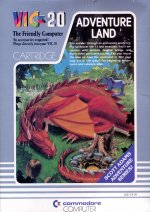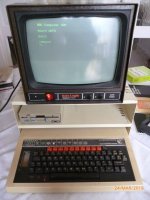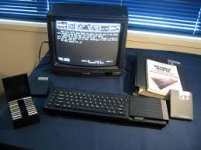I used to play Battlefield 4, tried Battlefield 1(WWI) and didn't really like it.
What time I have on the computer now does not include games. Though doing and re-doing PCB layouts in KiCad trying to reach a pleasing result is strangely satisfying, better than playing games tbh.
Battlefield 1942 and 2 were my mainstay for online gaming for years after the game was 'obsolete', and my PC isnt advanced enough to cope with more!
I really liked BF4, BF3 was the first in the series I played.
My PC is still hanging in there.
Ryzen 1600X w EKWB EVO Supremacy water block(overclocked)
MSI Gaming Carbon motherboard
16GB RAM (overclocked)
R9 290X w EKWB fullcover water block (overclocked)
360mm Alphacool XT45 radiator
240mm Alphacool XT45 radiator
D5 pump
Etc etc.
My PC is still hanging in there.
Ryzen 1600X w EKWB EVO Supremacy water block(overclocked)
MSI Gaming Carbon motherboard
16GB RAM (overclocked)
R9 290X w EKWB fullcover water block (overclocked)
360mm Alphacool XT45 radiator
240mm Alphacool XT45 radiator
D5 pump
Etc etc.
How did you distribute PCBCAD2?
Maplin Electronics sold it for me.
Did ok for a few years until Windows came along then Maplin abandoned it.
It wasn't until Delphi Pascal came out that I converted PCBCAD2 to Windows.
Didn't really catch on until I discovered ebay.
My first computer was a Commodore VIC-20 and I spent many a happy evening playing Scott Adams text adventures.
Plugging in a ROM cartridge sure beat waiting for a cassette tape to load!
My first PC at work was an IBM compatible.
It had two floppies, 256K RAM and an amber monitor.
I eventually got a 32MB hard drive for it that cost £300.
I bought more RAM for it to get it up to 512K.
Don't talk to me about floppies Nigel!
I used a BBC Micro long after its sell by date in order to access the many BBC Basic programs that I'd laboriously typed in.
When I was a young engineer the company I worked for got into Teletext.
Our hardware man pinched the hardware from a wireless world project and got it put into a ULA.
I had to write the Teletext software for the BBC micro, Sinclair Spectrum and Commodore 64. Kept me out of mischief for about 18 months.
The Spectrum was fun with micro drives which were like very small 8 track tapes. Had to keep backups on at least two micro drives and a tape drive too. Luckily the BBC micro had a Teletext screen mode which made the job much easier. On the other hand the Spectrum had 32 character display by 24 lines. I had to somehow squeeze 40 characters/row into 32/row. There was some jiggling with the background colours it all worked out in the end.
Last edited:
You've an interesting background in computing Nigel!I had to write the Teletext software for the BBC micro, Sinclair Spectrum and Commodore 64. Kept me out of mischief for about 18 months.
The Spectrum was fun with micro drives which were like very small 8 track tapes.
My friend had a Sinclair QL (Quantum Leap!) which was an upmarket Spectrum ZX that had those microdrives built in.
It was supplied to him by his company and was intended as a serious working tool. Don't think it stayed long on his desk!
Attachments
You've an interesting background in computing Nigel!
My friend had a Sinclair QL (Quantum Leap!) which was an upmarket Spectrum ZX that had those microdrives built in.
It was supplied to him by his company and was intended as a serious working tool. Don't think it stayed long on his desk!
The company I worked for had a MPM computer and I started on that but it was also used for stock control. When I started assembling code it just killed it dead on speed so I got relegated back to tape and microdrives.
I left that company and went on to be a Design Consultant and even then for the first year or so I was using a Sinclair Spectrum for writing software.
We bought in a Z80 assembler for the Spectrum but the other assemblers I had to write myself. I think we got first our real IBM compatible PC in around 86. The joys of DOS in those days.
I had a Sinclair QL for a while.
...played shareware games like Captain Comic or Commander Keen?
Cmdr Keen quite a bit.
That WinSolit game from the early 1990s is shareware.
I had a collection of things that went sour. In "BABY", babies are thrown out of a burning hospital and you have to catch them. Anything faster than 8088-4.77 (even a V20-8), they fall too fast, splatsplatsplat GAME OVER. Some later toys ran through WinXP but Win7-64 objects to them.
Great stuff Nigel!When I started assembling code...
My knowledge of programming goes no further than BASIC, but that is probably better than that of the average game player these days.
I used to spend hours typing in the programs for games published in the VIC 20 magazine. The games never worked first time and I quickly learned to identify mistakes in the published program. It was very satisfying when I finally got the games to work - even if it was just a another version of Connect 4!
P.S. I also quickly found out how hard it was to beat the computer!
I started off in 1980/81 as a student electronics engineer.
I went on a Government tops (training opportunities scheme) course doing industrial electronics. As part of the course we were introduced to a Z80 based system called a Micro-professor. You had to type in hex codes (no assembler on this one) and you could read switches or display on a multi 7 segment display. So I was introduced to the Z80 and its architecture pretty early on. So assembly language wasn't too big a step. I still remember some Z80 hex codes like 0x3E to load accumulator. 0xCD for call and 0xC9 for return etc etc
In my first job I was an electronics engineer but dabbled as much has I could in Z80 on a ZX81 computer. They took on another hardware engineer who did the ULA chip I mentioned earlier but they had no one to write the software for the personal computers. I said I fancied a go and they gave me the job. I stumbled my way through it to start with but within a few weeks I was getting much better. Later I had to get into the 6502 processor for the Commodore 64 etc.
I went on a Government tops (training opportunities scheme) course doing industrial electronics. As part of the course we were introduced to a Z80 based system called a Micro-professor. You had to type in hex codes (no assembler on this one) and you could read switches or display on a multi 7 segment display. So I was introduced to the Z80 and its architecture pretty early on. So assembly language wasn't too big a step. I still remember some Z80 hex codes like 0x3E to load accumulator. 0xCD for call and 0xC9 for return etc etc
In my first job I was an electronics engineer but dabbled as much has I could in Z80 on a ZX81 computer. They took on another hardware engineer who did the ULA chip I mentioned earlier but they had no one to write the software for the personal computers. I said I fancied a go and they gave me the job. I stumbled my way through it to start with but within a few weeks I was getting much better. Later I had to get into the 6502 processor for the Commodore 64 etc.
Last edited:
Younger computer gamers may not be aware that the Commodore 64 is the best selling computer in history. It is estimated that close to 20 million C64s were sold.Later I had to get into the 6502 processor for the Commodore 64 etc.
Millions of today's programmers, designers, engineers and enthusiasts cut their teeth on the VIC-20 and/or the C64.
In "BABY", babies are thrown out of a burning hospital and you have to catch them. Anything faster than 8088-4.77 (even a V20-8), they fall too fast, splatsplatsplat GAME OVER.
Lol! I don't think you could get away with that one nowdays.
Nigel,
I still run a lot of instruments made using Z80 (and one or two using the Z8 uC)
The biggest problem I have, is that I dont have a clue how to program them via the direct hex codes, or program the also ancient EEPROMs.
Converting to PIC seems like a complete redesign, hardware and software. It's a pain. Dealing with legacy DOS is also a pain. Everything has moved away from such methods of prototyping it would seem.
I still run a lot of instruments made using Z80 (and one or two using the Z8 uC)
The biggest problem I have, is that I dont have a clue how to program them via the direct hex codes, or program the also ancient EEPROMs.
Converting to PIC seems like a complete redesign, hardware and software. It's a pain. Dealing with legacy DOS is also a pain. Everything has moved away from such methods of prototyping it would seem.
- Home
- Member Areas
- The Lounge
- Computer games


